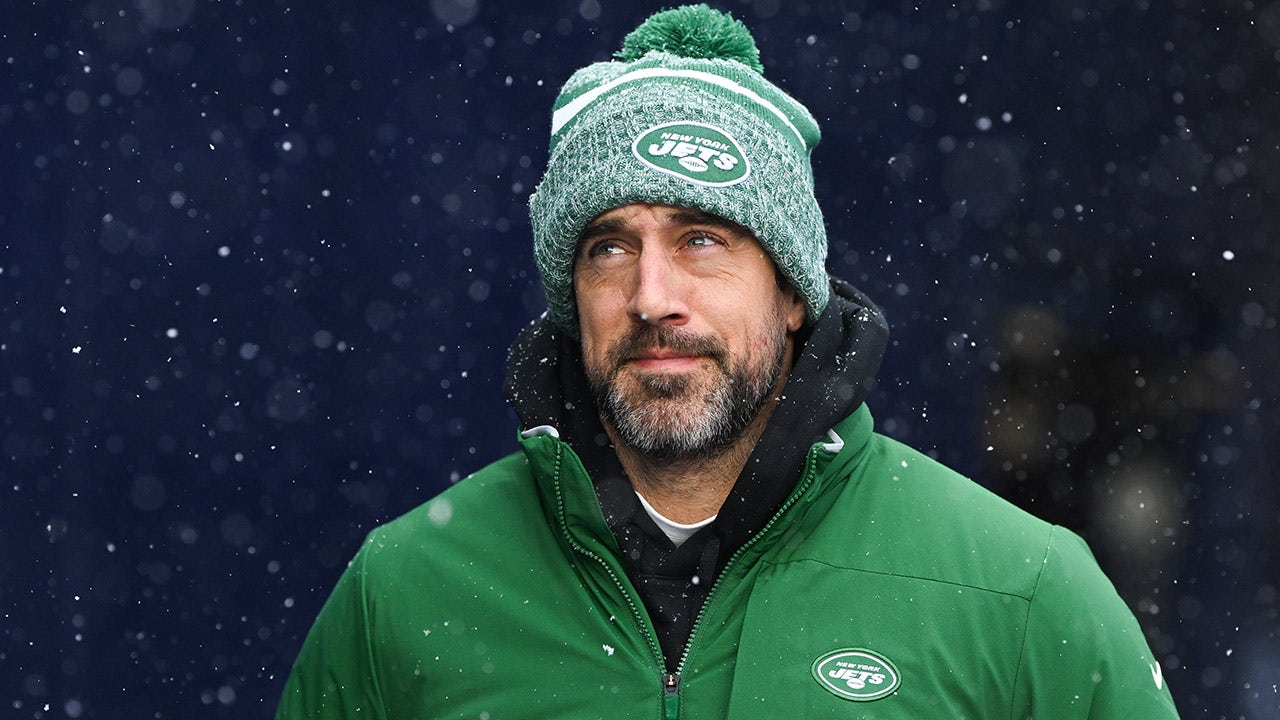NEW YORK — On Tuesday afternoon, the world No 88, in the U.S. Open main draw as a wildcard, destroyed the 10th seed Jelena Ostapenko in the U.S. Open first round.
In theory, that sounds like a shock win, but the wildcard in question is Naomi Osaka, a two-time champion here and one of the biggest draws of the tournament.
Osaka may be a natural introvert, but she has the gravity of a superstar, even as a wildcard. From her sensational outfit — which on Tuesday included a customised green tennis dress and a large green bow on her jacket — to her eye-catching power, she had enough to pummel Ostapenko into a 6-3, 6-2 defeat in just over an hour.

Naomi Osaka produced an almost error-free display of tennis to dispatch Jelena Ostapenko (Robert Prange / Getty Images)
Flushing Meadows is most associated with her two greatest triumphs. She won the U.S. Open title here in 2018 and 2020, beating Serena Williams in the first final on a famously tempestuous occasion — through no fault of Osaka’s — to announce herself as a star. But three years ago, it was the site of a breaking point. She threw her racket on multiple occasions and received a code violation for firing a ball into the crowd during an excruciating defeat to Canada’s Leylah Fernandez. When asked about what happened, she said: “I’m not really sure why.”
“Recently, I feel very anxious when things don’t go my way,” she said.
In the three years since, during which Osaka has continued to transcend tennis for her openness to discussing its impact on her mental health, Osaka had not won a match at the Billie Jean King National Tennis Center.
She returned to the sport in late December after giving birth to her daughter, Shai, and upon beating Ostapenko she looked to the sky as tears flowed, overcome by the emotion of her first victory in New York since 2021. There was a lot to process, but what actually set Osaka off went back to her childhood.
“It was a combination of a lot of different things,” she said after her victory.
“I grew up here, so just seeing kids, and then remembering my daughter, but also seeing kids coming and watching me play… And just remembering that I was a kid, I guess a long time ago, made me very emotional,” Osaka said.
Her mind also went back to this time last year when with her daughter not even two months old, Osaka watched on from the stands as Coco Gauff got on her way to winning the title. Osaka didn’t know then whether she could reclaim the level that made her a champion here twice, took her to world No 1, and brought her two more Grand Slam titles, both in Australia.
That feeling has carried on throughout much of 2024, which saw her begin her comeback after 15 months away from the tour on New Year’s Eve. The first half of the season included some promising results, including a barnstorming French Open clash with world No 1 Iga Swiatek, but the last few months have been tough. They have prompted introspection.
After a disappointing loss in the Cincinnati qualifiers to Ashlyn Krueger, Osaka again opened up.
“My biggest issue currently isn’t losses, though, my biggest issue is that I don’t feel like I’m in my body.”

Osaka, laying down on Arthur Ashe after winning the title in 2020, has opened up about her struggles in returning to tennis (Matthew Stockman / Getty Images)
It was a startling admission and perhaps reflected the pressure Osaka was feeling. Throughout the year, the message from those close to her had been that the former world No 1 should be judged not on the promise of the clay and grass swings, in which she found her feet, but during the summer hard-court season.
On her favourite surface, Osaka would come alive.
“It’s almost, like, you have a deadline and you’re crunching at midnight to try to make it,” Osaka said on Tuesday about the narrowing window she has to deliver on hard courts this year. Until Tuesday, her best individual performance had remained that stunning night match at the French Open, where she held a match point against Swiatek. In the two biggest hard-court events ahead of the U.S. Open, Osaka lost in the second round at the Canadian Open and then failed to qualify for Cincinnati.
Even giving herself the grace of returning to the tour after giving birth, Osaka was impatient and concerned. She likened her discomfort on court to how she had felt in general postpartum. Desperate to feel herself again in competition, on Tuesday that feeling returned.
The Louis Armstrong Stadium fizzed with anticipation after Osaka’s two-year absence. A striking matchup against Ostapenko, a top-10 player who can come alive on the biggest occasions — and has an unbeaten record against Swiatek — only added to the feeling that this match, like Osaka and Swiatek’s second-round encounter in Paris, would befit a late-stage occasion rather than an opener. Osaka, world No 88 or not, retains the gravity of all she has done in the sport no matter her ranking.
The match started evenly, but from the moment Osaka broke at 4-3 in the first set, the outcome was never in doubt. She started to hit her forehand with increasing freedom and venom; Ostapenko, a former French Open champion, had no answer.

GO DEEPER
How should a world No 1 be? Iga Swiatek and Naomi Osaka have an idea
Osaka celebrated points with loud “come ons” and fist pumps and the crowd matched her noise and energy. In what was an outstanding exhibition of controlled aggression, she didn’t lose her serve throughout and banged down nine aces to secure a first win over a top-10 opponent for more than four years. After Osaka had clinched the victory with a cross-court forehand winner, she sat down and covered her face with a towel as the tears poured out.
“Just seeing the stadium really full, it meant a lot because I was, like, ‘Oh, I hope people come watch me play,’” she said afterwards.
She followed up that piece of disarming modesty by laying down the gauntlet in the most softly spoken and understated way imaginable.
“I feel like for me, this court is my home — it gives me so much more confidence.”
She also had extra motivation to beat Ostapenko on Tuesday, knowing that if she did, she would get the chance to wear the other outfit she had ready for the tournament. “That was very important to me,” Osaka said with a smile.
Where this run will lead is in question. Osaka next faces last year’s semifinalist Karolina Muchova of the Czech Republic, with another opportunity for a statement victory. Before all of that, she can soak in a win against a top-tier opponent and the U.S. Open can once again revel in the gravitational pull of a tennis superstar.
(Top photo: Robert Prange/Getty Images)






